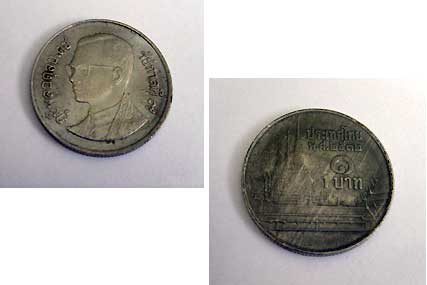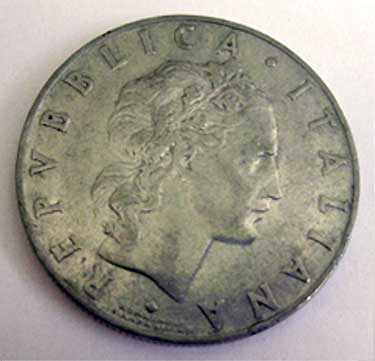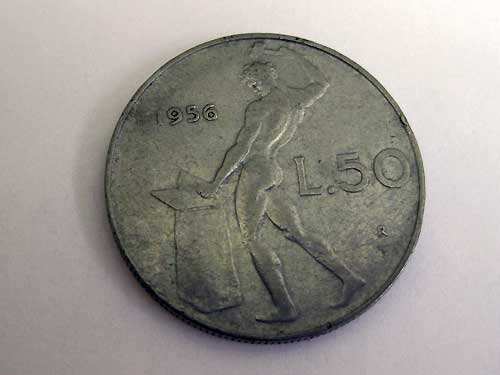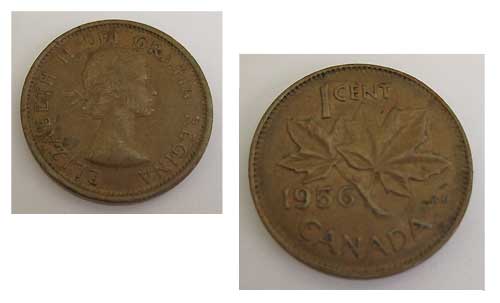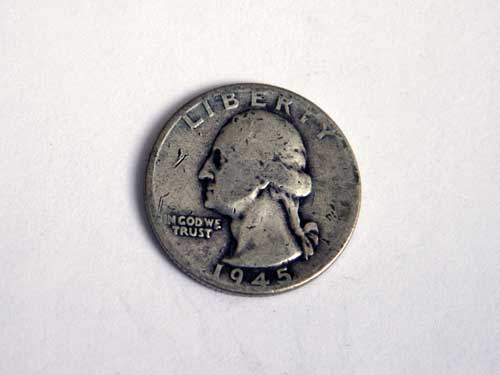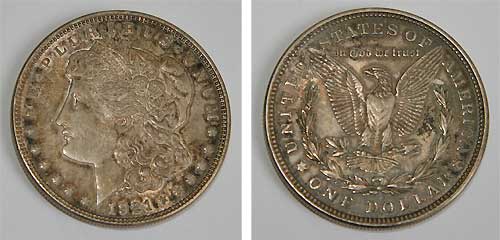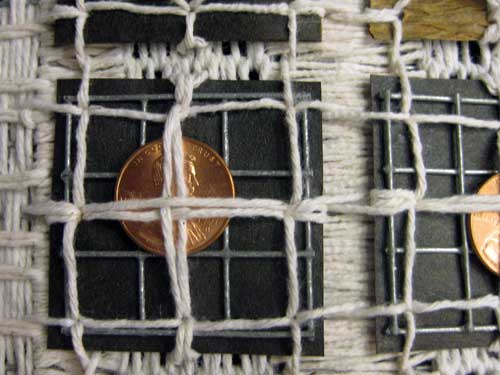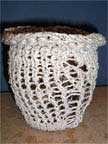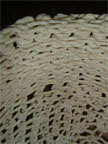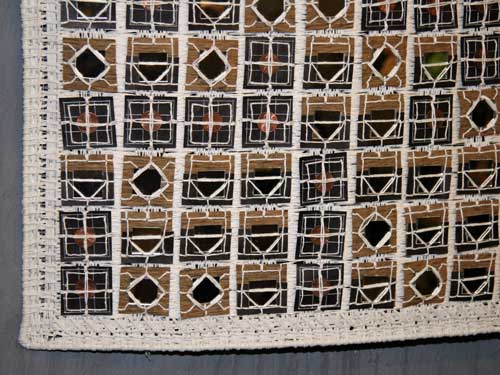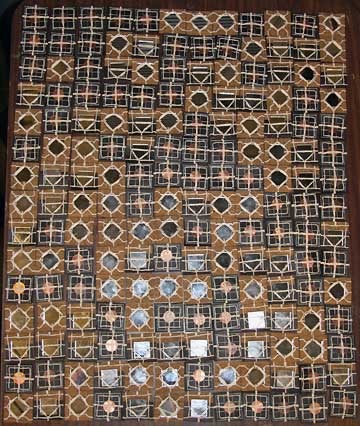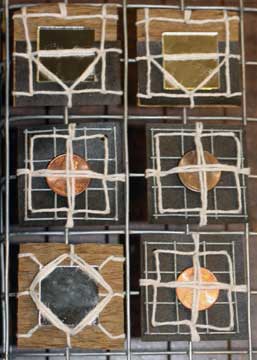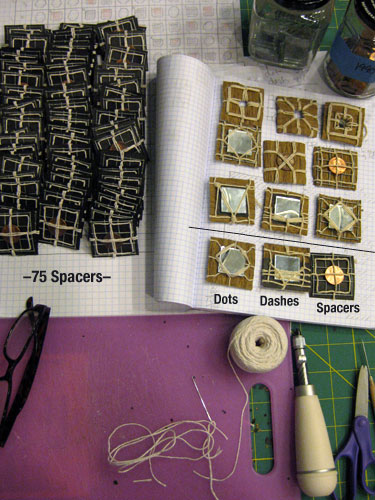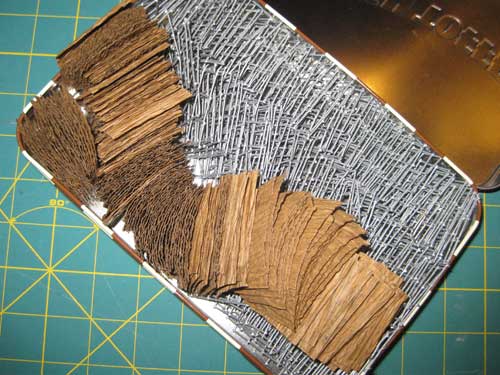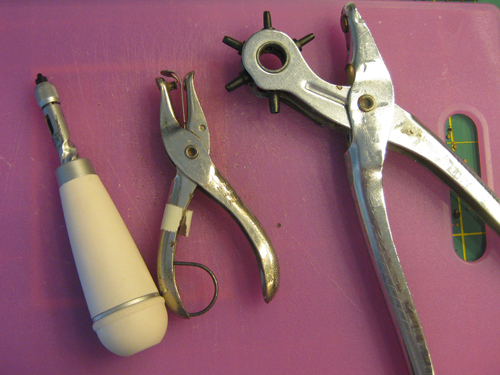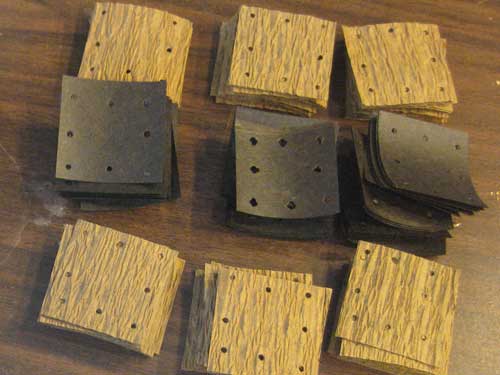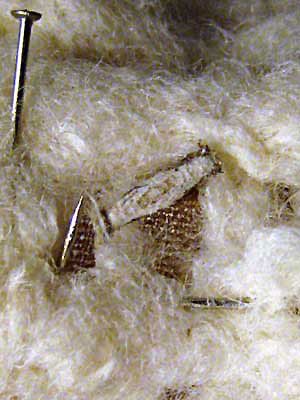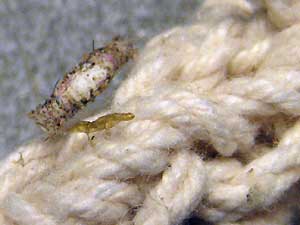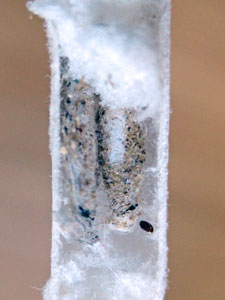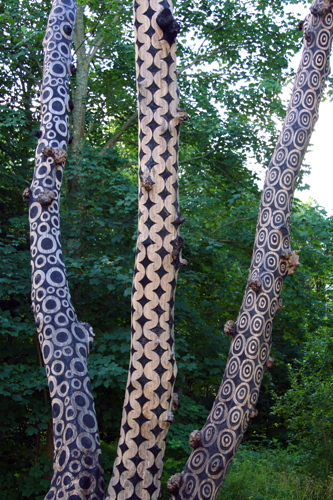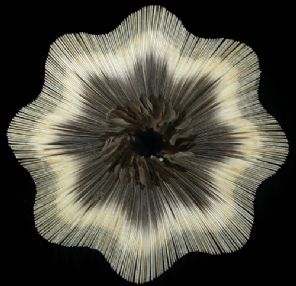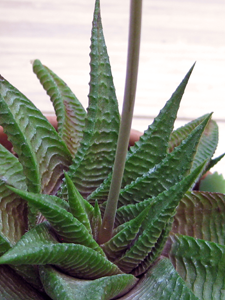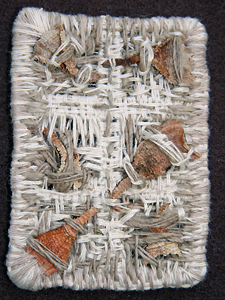Last night I was reading through a few blogs that I subscribe to, and ran across reference to rust dyeing. I snagged loads of oxidized bits from my Dad’s shop that might work nicely.

Of course I would want to place the items so the images left behind make coded messages.
It is interesting that the techniques mentioned are not all that different from some techniques used to apply patina to metal. One site suggested placing the wet fabric wrapped around metal in a plastic bag. Sounds a bit like fuming to me.
I wonder why I hadn’t thought of using patination techniques as a transfer method. I have rusted metal bits that remained in pieces. They were either rusted first or after they were bound into the piece.

Detail of a work in progress–Stained by the Past
A few highlights of what I found–
Vinegar is used straight or as a 50/50 with water, bath or in a mist bottle
Contact time can be a day to 5 days. Variables would include the color and type of the fabric used, and the type of rust applied, amount of saturation of fabric. Misted fabric would dry quicker than fabric that has been saturated and placed in a plastic bag or container to keep fabric damp.
Neutralizing the rust process requires saturating the rusted on fabric with a saline solution, and a washing. The saline solution can be as weak as 1 tablespoon to a gallon of water.
On The Natural Dye Notebook I found a technique for making a rust solution that can be applied with a brush to fabric.
Mix a small amount natural rust with water, I generally use one teaspoon rust to one cup liquid, or with soy milk…
